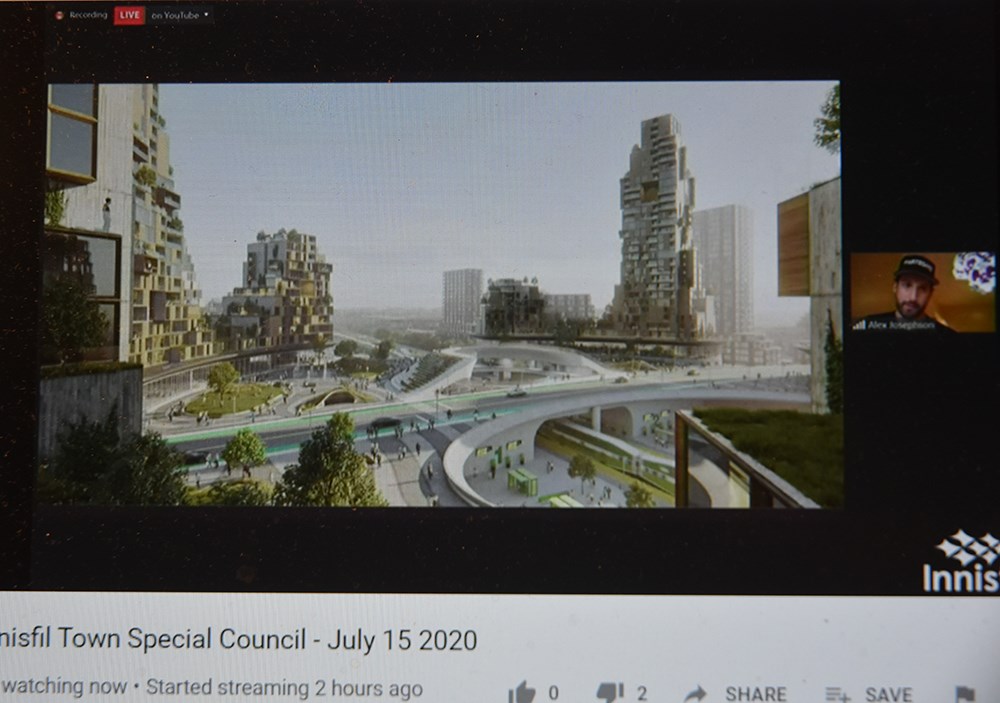robmausser
Senior Member
Trains are sexy ok?
I have done a lot of European bus travel.... they aren't all that much better in spots. I have stood at a sign in some beautiful places wondering if I'm in the right spot and will the bus fly right by me. But, the European bus networks take one to a whole bunch of such places whereas ours are limited to the automobile. It's a network we should be building, we just need to do it right.

I've always thought that SW Ontario could support a dense web of passenger rail lines. Kitchener-Waterloo, Hamilton, Cambridge, Guelph, Brantford, and Milton are all very close together and have close to 2 million people between them. The highway infrastructure between them is lacking in a lot of cases so trains could gain significant modal share. Between most of those cities there are underutilized rail lines that could be used or rail trails that could have tracks rebuilt. After GO expansion is finished and if HFR happens, those two projects will go a long way to rebuilding train culture in Ontario. Each project builds momentum for the next.Yes. Rebuild it all. Throw a couple of (battery electric if you want) DMUs on some of these lines and have some form of limited service. There's a study out in Waterloo Region of essentially buying some of that UPX DMU stock and running from Cambridge to Guelph via Hespeler as opposed to extending the GO from Milton.
Not just for sprawl reasons, but environmental reasons. Give people the option of living in a small town, but the ability to take a train to a regional centre for services, post-secondary, etc. Electric cars and buses are great, but they still cause congestion. But I agree, don't give it to GO in it's current form, or at least overhaul GO to have different regions...
As there are a number of replies and exchange on the topic, to spare us a wall of quotes, I'll try to consolidate and address them.
The North American preference for rail over buses is much more of an American thing, stemming from both systemic, and systematic racism, and I do not think Ontario should make decisions incorporating racism into public policy, nor is it relevant to this forum. Canadian municipalities tend to have better transit systems than American municipalities, because open contempt and systematic racism have not played as significant a factor in municipal transportation policy, or intercity transit policy. Canadians when looking at buses are mostly reacting to quality of service, and Greyhound offers poor service.
In the US it stems from racism, in Canada its because of poor service.What are you talking about in terms of rail preference in Canada stemming from racism? I prefer rail because after 6 hours on a Montreal-Toronto megabus, my entire body aches but after 5 hours on VIA I feel refreshed
What are you talking about in terms of rail preference in Canada stemming from racism? I prefer rail because after 6 hours on a Montreal-Toronto megabus, my entire body aches but after 5 hours on VIA I feel refreshed
The US Supreme Court case that upheld racial segregation Plessy v. Ferguson, was about racially segregated trains. In Morgan v. Virginia, the US Supreme Court held that the state of Virginia enforcing racial segregation on interstate buses was unconstitutional. One of the major parts of the American Civil Rights Movement was the Montgomery Bus Boycott, which was over racial segregation of municipal buses in Montgomery, you may have heard of Rosa Parks. Boynton v. Virginia held that segregation of bus terminals, including facilities such as washrooms and restaurants, was unconstitutional. In 1961 in reaction to the non-enforcement of Supreme Court decisions, groups of white and black people rode intercity buses to challenge local laws, they were called Freedom Riders, and there was violent racial push back, however it was an important PR win for the Civil Rights Movement.
The American neglect and disdain of buses has to do with racial discrimination. DKsan said "North Americans prefer rail over buses ", in response, I said it is "much more of an American thing", as the preference is far stronger in the US. sacred appears to have misinterpreted what I had said, thinking that I was saying the preference for rail in Canada has to do with racism, instead, what I had said was "Canadians when looking at buses are mostly reacting to quality of service, and Greyhound offers poor service." Preference for rail over bus because rail tends to be higher quality is much easier to correct than culturally ingrained racist views, it can be corrected by offering good quality bus service. Given the number of rural communities introducing bus service in the past five years, they do not appear to have any inherent disdain for buses. When you offer then GO buses connecting them to other municipalities, the GO bus becomes an agent of empowerment and freedom, it expands what they are able to do.
The man on the Clapham Omnibus could deduce that I am not in fact someone born in 1870, and that I am no more attempting to impersonate Wm Perkins Bull than the poster with the handle Allandale is attempting to impersonate a train station.I'd like to point out that this profile is impersonating someone who died in 1948.
https://www.wikitree.com/wiki/Bull-2838
Mods.. is there anything that can be done before this gets into a racially charged debate.

Money Money Money, du du du du du du...^You don’t win many points by making a provocative statement and then, when others react, try to claim the high ground by declaring that you are returning the discussion to topic. If it walks like a troll, and quacks like a troll, it’s a troll.
The more pressing question is - how did a reasonably well developed network of bus operations which had been built by about 1970, fall apart in Ontario? We once had Gray Coach, Canada Coach, Travelways, Voyageur, Ontario Northland, Greyhound etc..... serving a lot of places that today have no public transit. Even where those routes remain, the passenger counts are way down, And, what are the barriers to restarting or augmenting such services, on the old routes or on new ones?
I’m not sure that a debate on social tensions matters much to that discussion.
- Paul

Extend authorities under the Transit-Oriented Communities Act, 2020 (TOC Act) to other provincial transit projects, such as GO Heavy Rail and light rail transit which would be specified in regulation.
- Amend the TOC Act to extend authority to provide exemptions from the Hearings of Necessity provisions in the Expropriations Act to other provincial transit projects for TOC.
- Amend the TOC Act to provide authority to enter into new types of commercial arrangements for other provincial transit projects for TOC to the Minister of Transportation and provide the Minister of Transportation with the ability to delegate this authority by regulation to Metrolinx or other government agencies.




